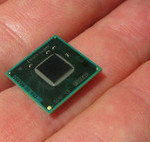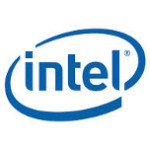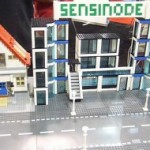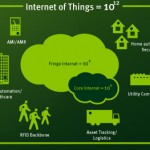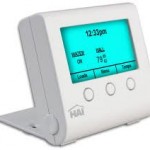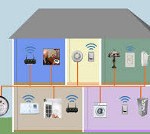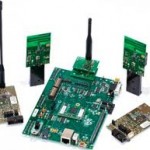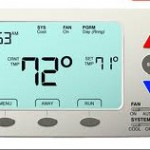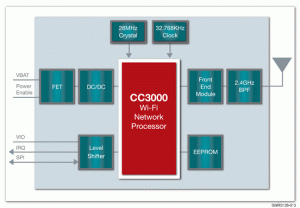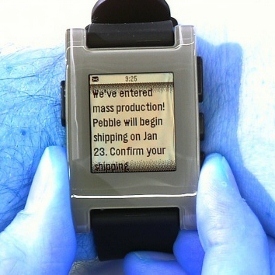One of the major hurdles of developing portable (and connected) devices is finding the balance between power consumption and battery storage that allows for a genuinely useful device and experience. Generally most components can be optimised through good design and wise choices, however the main microcontroller or CPU can be a sticking point – until now.
Intel have taken this problem to heart and as a solution, recently announced their “Quark” family of system-on-chip cores. They’re a family of low-power 32-bit CPU cores designed to compete with ARM’s Cortex-M series in modern Internet-of-Things and wearable embedded computing applications.
Quark is a very low-power and compact x86-compatible core designed to be even smaller and lower in power consumption than Intel’s low-power Atom CPU cores, which are targeted at tablets, low-power netbooks and smartphones.
Notably, Quark is the first Intel core that is fully synthesizable and designed for potential integration with third-party IP blocks. This means that a customer could use the Quark core, license it from Intel, and hook it to peripherals on a custom system-on-chip, like for example custom graphics, I/O, storage, 802.11 or 3G networking.
It is claimed that Quark will be one-fifth of the size of the Atom core, and have one-tenth of the power consumption. At this level, Quark is much more powerful – and power hungry – than a lightweight 8-bit microcontroller, but it is also not a competitor to the more powerful ARM Cortex-A family either. It aims to compete with the popular Cortex-M family of 32-bit microcontroller cores from synthesizable microcontroller IP leader ARM.
The Quark core is a single-core, single-thread, low-power, small-footprint CPU core, and it is targeted at “Internet-of-Things” applications, wearable computing devices such as “smart watches”, and low-cost disposable medical devices as well as industrial and building automation control systems.
At this years’s Intel Developers Forum, a prototype “smartwatch” based on Quark technology was displayed as a proof of concept, along with a wearable instrumented patch for medical datalogging. Quark has been demonstrated in a prototype Internet-of-Things enabled HVAC automation application by HVAC leader Daikin. Daikin’s prototype system has WiFi and 3G support, and allows for secure remote control and monitoring.
The Quark product line is designed to slot in below the existing Atom family in terms of cost and power consumption, compatible with the Pentium instruction set architecture but aimed at markets where small form factor and low power consumption take priority, with a power consumption target that is apparently less than 100 milliwatts in some cases.
This power efficiency makes Quark attractive in wearable computing applications such as “smart watches” and Google Glass style wearable displays where battery capacity is very limited due to size constraints. Some bracelet-like wearable devices have been shown at this year’s Intel Developers Forum as a proof-of-concept of a wearable system powered by Quark technology.
Being smaller, lower power, and less powerful than Atom, Intel will be targeting the Quark product line at the Internet-of-Things market in applications where more power than a traditional embedded microcontroller is desirable or required, but less power consumption than an ordinary PC or notebook is desirable.
Quark is synthesizable, which means that customers can add their own IP around the core. ARM, for example, lets companies license its CPU cores and then add their own co-processors or other components to create chips optimised for a wide variety of projects and industries. How this would work in the case of Quark is not exactly clear however, since Intel plans to keep manufacturing of Quark silicon entirely in-house, at least initially.
This is a new move for Intel, but the company intends to retain control over their entire chip fabrication process in-house, bringing in existing customer IP for integration with Quark and in-house fab, although it is possible at least in principle that other foundries could fabricate Quark-based systems for licensees of the IP.
Intel’s decision with Quark means leveraging its own IP in a way that lets it offer customisable hardware to potential customers, without giving up control of either its processor IP or its own fab capabilities. Designers will not be allowed to customise the Quark core, they can only connect third-party IP blocks to its fabric.
Quark’s partially-open fabric appears to be somewhat derivative of ARM’s long-standing and successful policy of licensing its Cortex IP to other chip makers in a synthesizable form. ARM Cortex M3 and M4 cores have been rapidly stealing market share away from other microcontroller platforms in recent years – since the 32-bit architecture offers significant performance gains over 8-bit platforms such as PIC or AVR.
Furthermore their Cortex-M3 is finding its way into smartwatches such as the Sony SmartWatch 2 and the Qualcomm Toq as well as wireless sensor network system-on-chips such as TI’s CC2538 802.15.4/ZigBee/6LoWPAN platform. However as the Quark matures we’re sure it will be a successful player in the portable device and IoT arena.
Technologies such as Intel’s Quark are an example of how technology is constantly improving, and with the right knowledge it can be used to your advantage. However there are also many existing power-saving chipsets on the market your team may not be aware of, or unsure about taking on a new development platform.
But don’t let that get in the way of improving your existing or new designs – if you’re not sure about your options, discuss them with a team that understands the latest technologies, platforms and how to integrate them for your advantage – the team at the LX Group.
Getting started is simple – for a confidential discussion about your ideas and how we can help bring them to life – click here to contact us, or telephone 1800 810 124.
LX is an award-winning electronics design company based in Sydney, Australia. LX services include full turnkey design, electronics, hardware, software and firmware design. LX specialises in embedded systems and wireless technologies design. https://lx-group.com.au
Published by LX Pty Ltd for itself and the LX Group of companies, including LX Design House, LX Solutions and LX Consulting, LX Innovations.

